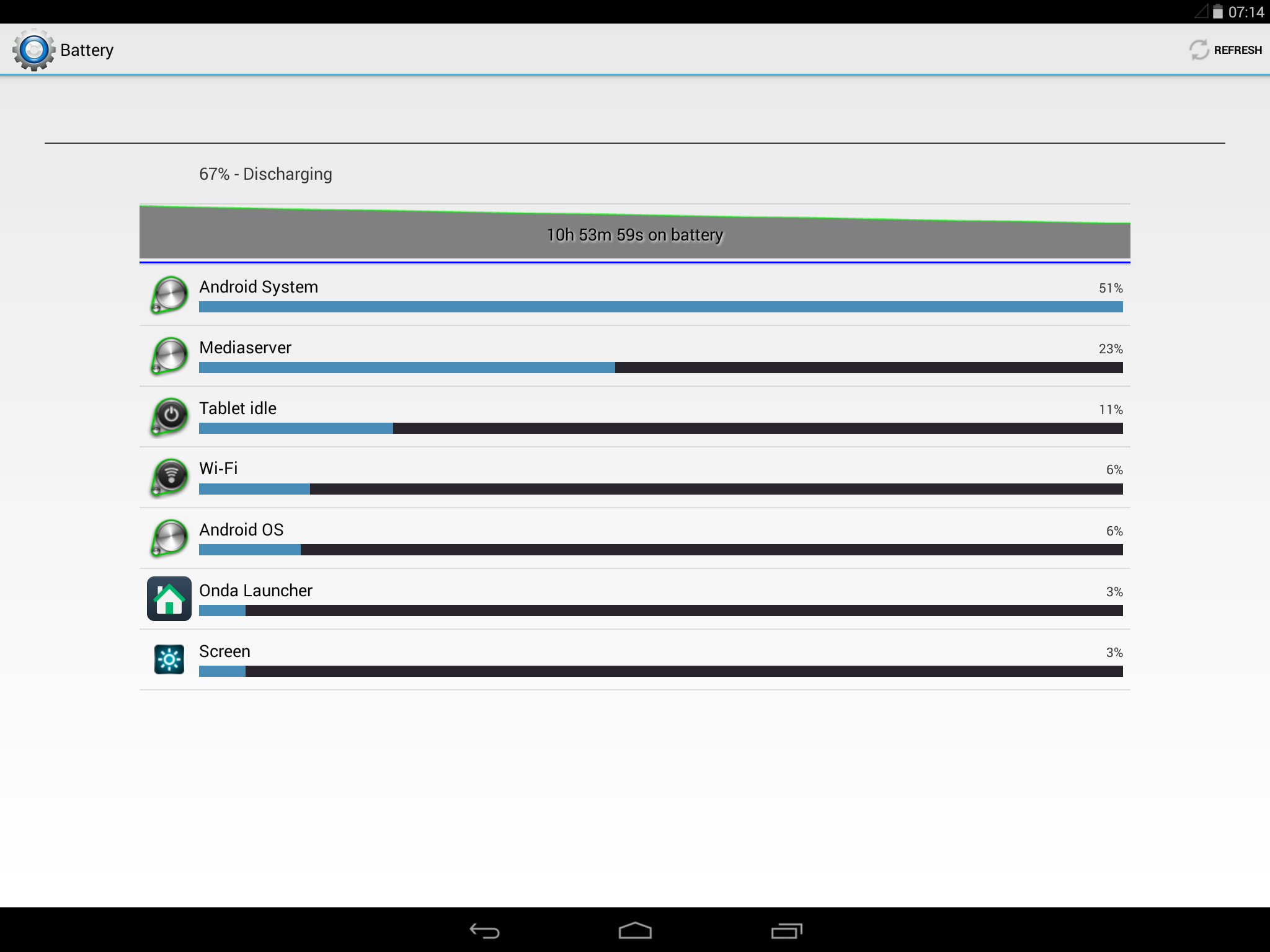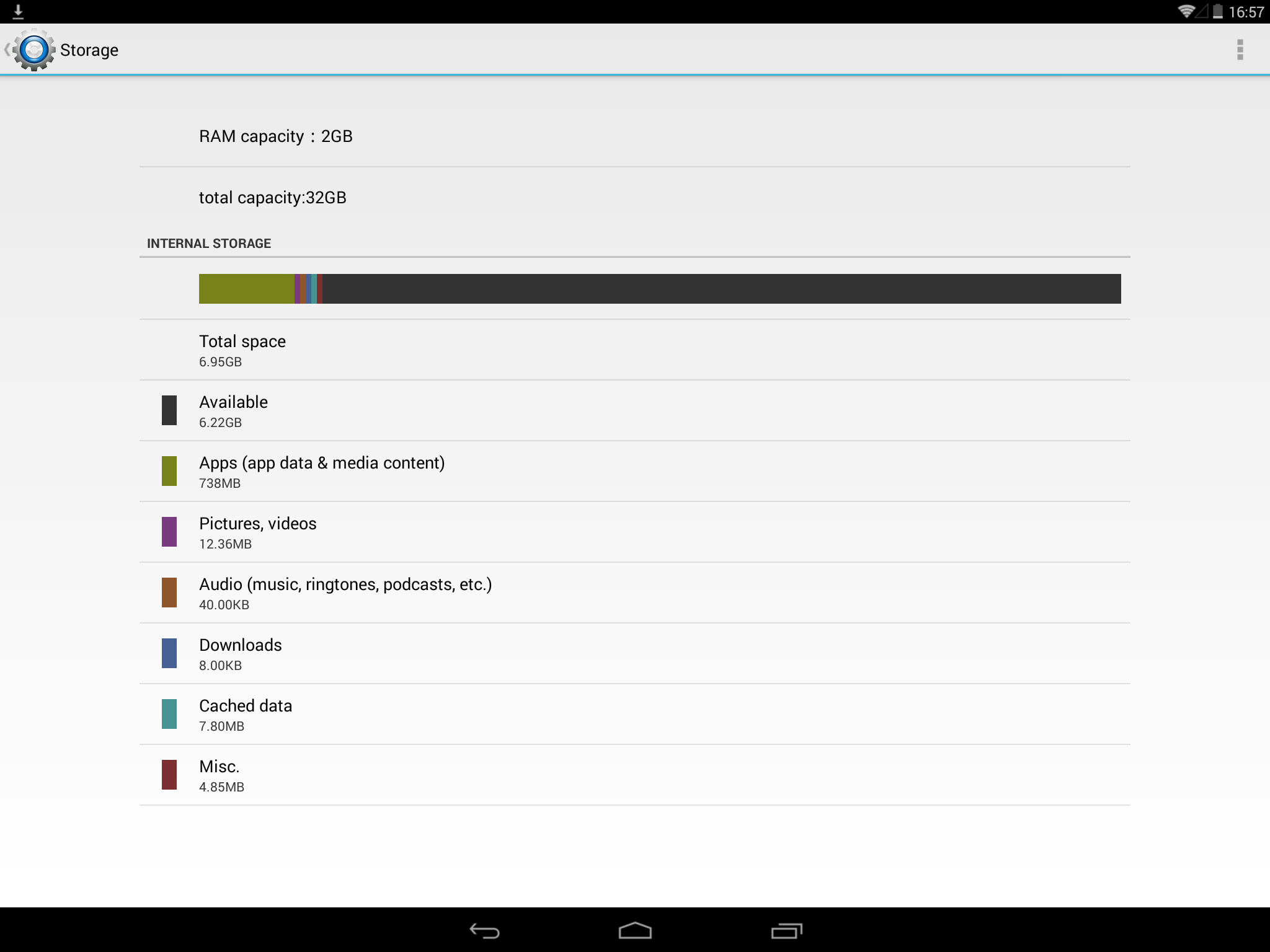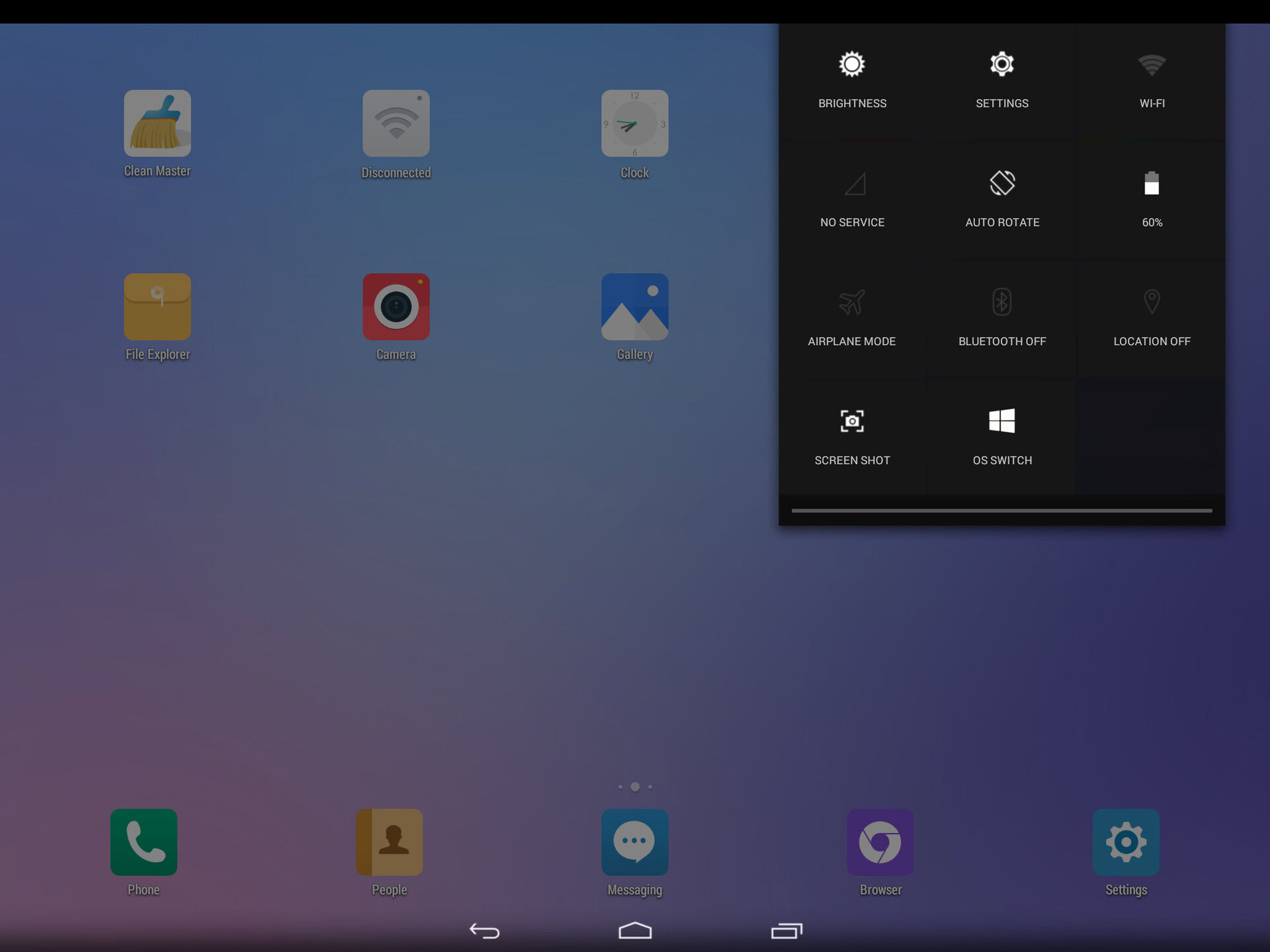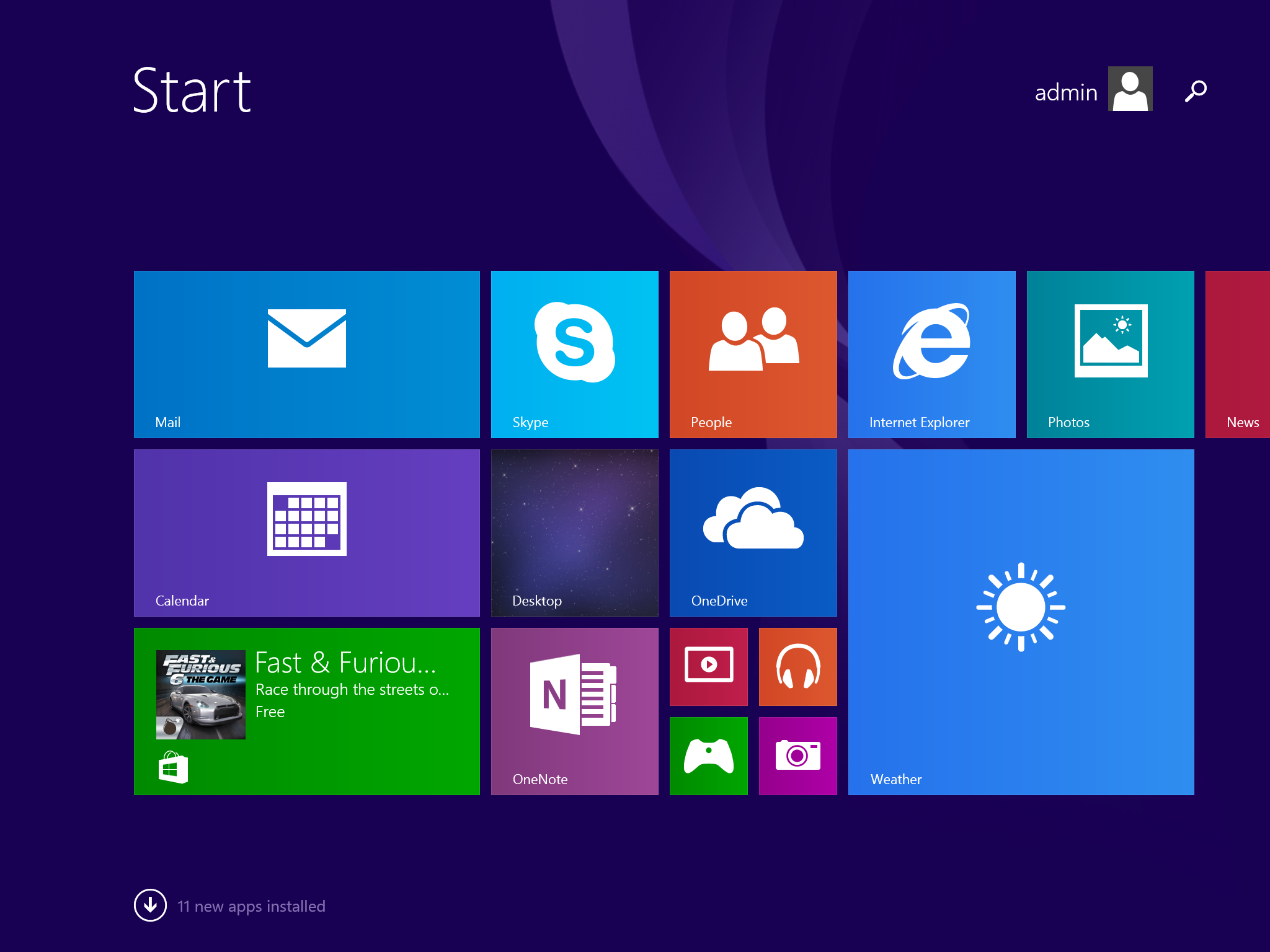Affiliate links on Android Authority may earn us a commission. Learn more.
Onda V919 3G Air review
One of the things that seems to polarize people, and start flame wars in general, is how to answer this question: what is the best mobile operating system? Some say Android, others say differently. In the real world we often mix and match our operating systems. For example, although I use an Android smartphone and an Android tablet, I still use a Windows PC. Microsoft’s OS is primarily found on systems with Intel compatible processors (although that is changing). Intel and Microsoft have been trying hard to boost their tablet market-shares, and both companies basically give away stuff to make devices that use their products cheaper. Intel effectively gives away Atom processors and Microsoft makes “Windows 8.1 with Bing” free for certain classes of tablet.
Related – Best Cheap Android Tablets / Best Android Tablets
This has given rise to a surge in the number of Intel powered tablets that run Windows. Since Intel processors can also run Android it was really only a matter of time before an OEM released a tablet which can run both Android and Windows. One such tablet is the Onda V919 3G Air.
Like many Chinese OEM tablets, the Onda V919 Air is clearly trying to mimic the iPad Air. The dimensions are almost exactly the same as the iPad Air and its overall look is very similar to the iPad Air, even down to the bottom speaker grills that flank the micro USB port.
The power button and volume rocker are on the right hand side, just like the iPad Air, and on the front panel there is a circular home button, again just like the iPad.
On the back there is a plastic cover which when opened reveals slots for the SIM card, the SD card and some metal strips, presumably for the antenna. Again the placement of the cover on the top edge, next to the rear facing camera, is very similar to the iPad.
However there are of course some significant differences. First the Onda V919’s shell is made of plastic, second the device is slightly thicker than the iPad Air, and third the processor in the V919 Air isn’t an ARM based processor like the iPad or even the Nexus 9, it is an Intel chip. The result is that the Onda V919 can run both Android and Windows 8.1, but I will talk about that some more later.
One problem I did find with the design is that the circular home button is very sensitive. It only requires the lightest of touches for it to activate. What this means is that when holding the tablet in landscape my thumb kept touching the button and taking me to the home screen. This is can be very annoying. At first I thought that the tablet software was unstable and that apps kept crashing and dumping me back into the home screen. However I eventually worked out that my thumb was to blame. Adjusting how I held the tablet finally solved the problem, however even though I am conscious of how I need to hold the device, I still find that my thumb gets too close to that home button.
Now some people prefer tablets with a 16:10 screen ratio, because more of the display is used when watching widescreen movies, however the 4:3 display ratio is certainly a popular alternative.
The Onda uses an IPS display which yields good viewing angles. The color reproduction is good, and the screen is bright. However one disappointment is that the tablet doesn’t have a light sensor which means there is no automatic brightness option available.
As I mentioned earlier, at the heart of the Onda V919 3G Air is an Intel processor, not an ARM based processor as found in the majority of Android devices. In this particular case it is an Intel Atom Z3736F, a quad-core processor which runs at 2.4GHz and includes an Intel HD Graphics GPU.In terms of usability the performance of the V919 3G Air was good. The UI always reacted quickly and games like Epic Citadel were able to achieve at least 50 frames per second. Video playback is smooth and I didn’t experience any lags or annoying pauses while using the device.
As for the individual benchmarks, the tablet scored 892 on Geekbench’s single core test, 2113 on its multi-core test, and an unverified 33413 on AnTuTu. Using 3DMark the device scored 7449 on Ice Storm Extreme and it managed 50 frames per second in Epic Citadel in High Quality mode.
GameBench testing confirmed the Epic Citadel score and showed that for simple 2D games the device can easily hit 55 fps.
The Onda V919 has a 6200 mAh battery. It is hard to theorize about the battery life from just the raw mAh number. But for comparison, the Nexus 9 has a 6700 mAh battery while the iPad Air and the iPad Air 2 have 8820 mAh and 7340 mAh batteries respectively. Unfortunately it looks like the battery life in the V919 isn’t great. My testing showed that you can stream YouTube videos for around 4 hours on a single charge. Alternatively a single charge will let you play intensive 3D games for around 2.7 hours or simpler 2D games for around 3.7 hours.
Overall these numbers are a little disappointing and it seems to me that the software needs to be correctly optimized for the hardware and Intel processor. If I fully charged the battery and then rebooted the tablet, so that no extra programs were running, the device loses over 30% of its charge in 11 hours while asleep. According to the battery chart, over 50% of the battery was consumed by the “Android system.”
The speaker on the V919 is nothing special, it does its job in that it produces sound, however don’t expect anything amazing. Also the speaker grills don’t seem to have any relation to the actual speaker, as covering both grills only reduces the sound marginally.
The tablet has built in support for 3G on 850, 1900 and 2100MHz. The last number is the common 3G frequency and should work in most places around the world, however a lot of carriers also use a secondary 3G spectrum range. In Asia and South America this is often 850MHz, but in Europe it tends to be 900MHz.
The device might work on AT&T in the USA as it uses 850 and 1900 MHz, however I haven’t tested it. For other networks in the USA standard GSM calls should work. You need to check with your carrier to ensure compatibility or if you trust Wikipedia then the List of UMTS networks page could have the information you need. As you would expect the tablet also supports Wi-Fi 802.11 b/g/n and Bluetooth 4.0.
The V919 comes with 2GB of RAM, which is the most supported by the Intel processor, and either 32GB or 64GB of storage depending on which model you buy. My test unit has 32GB.

One thing to remember is that this device actually has two operating systems pre-installed, Android and Windows 8.1. The internal storage is divided up between Android and Windows, with some space being used for the operating systems themselves and the remaining divided up as usable storage between the two environments. Under Android the 32GB model has around 6GB of space for installing apps and for storing your own files. Under Windows the free space on the “Disk C:” is about 8.5GB. This means that the rest is used to hold the OSes. However, the numbers don’t seem to add up and I am left with the feeling that a large chunk of flash memory is being underutilized.
In terms of what is missing, this tablet is very short on sensors of any kind. It has an accelerometer and that is about it. There is no GPS, no NFC, and no magnetometer. For most people this probably isn’t a problem, however many 3G enabled tablets come with at least GPS, so it would have been a nice addition.
The cameras on the V919 are very basic. The rear facing camera has a 5MP sensor and the front facing camera has a 2MP sensor. Personally I find the front facing camera the most important on a tablet as it is useful for video conferencing with Skype.The rear camera is good considering this is a tablet and it is only a 5MP sensor. The color reproduction is fairly faithful and the camera works well enough indoors as well as outdoors. Having said that, you aren’t going to win any photo competitions with it. Unfortunately the front facing camera is terrible. The colors blur easily and indoors there is lots of noise.
The bundled camera app is very simple and offers little more than the very basic operations. If you do use the camera more than occasionally then you would probably want to install a third party camera app.
Here are some sample shots so you can judge for yourself:

The supplied version of Android is fairly vanilla, except for the launcher. Onda has included its own launcher which doesn’t include an apps draw. Like the iPad, all the icons are on the home screens and you need to organize everything into folders. The Onda launcher also includes a theme switcher which allows you to pick one of 5 pre-installed themes including Funny Board and Childhood dream! If you don’t like the launcher, then the good news is that since this is Android, you can easily replace the launcher with one of your choice.
There are also a few bundled apps including a neat Wi-Fi configuration program and the LPAL configurator for Intel’s always listening technology. You are meant to be able to set a trigger that allows you to wake your tablet using your voice, however I couldn’t get it to work!
As for Windows, the installed version runs as expected. I won’t talk too much about how hard Windows 8.1 is to use without a mouse and keyboard, but that isn’t the fault of Onda. If needed you can use a mouse and keyboard via a micro USB to OTG converter (and a small USB hub), but you will need to buy one separately.
I was able to install programs like Chrome and VLC without any problem and the default Windows camera app worked reasonably well with the rear-facing camera. There wasn’t a toggle to switch to the front facing camera, however Skype found the front-facing camera without any problems.

One problem with the provided version of Windows is that some bits of the UI keep appearing in Chinese. Having fiddled with the regional settings etc., I thought I had set everything to English, but still from time to time I would get a window with Chinese writing!
The tablet comes with an micro SD card slot and the card is shared between Windows and Android. This means that files copied onto the card in one OS is available under the other. I was able to install Windows programs on the micro SD card (by installing them under D:), however there is no option under this build of Android to move apps to the SD card.
The concept of a dual-booting tablet is an interesting one and Onda certainly has made it a viable option. Overall the screen is good, the processor seems to perform well enough and both OSes run as you would expect. The battery life is less than I would have wanted and the over-sensitive home button can be annoying. But these weaknesses might be forgivable if you really like the idea of a dual-boot tablet.
You can get an Onda V919 3G Air from Geekbuying.com for just $225 for the 32GB model, and $240 for the 64GB model. The 64GB model is currently in pre-sell and will be available from February 25th. However the 32GB model is available now.
Update: Geekbuying is offering a $12 discount on both the 32GB and 64GB model using this coupon: v919dual